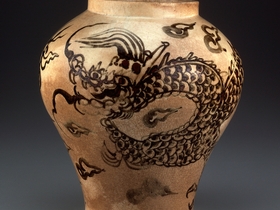Country of origin marking is an interesting phenomenon. Unlike most countries in the world, the United States has strict requirements that essentially every imported product be marked with its country of origin. This has been characterized as a rule to prevent confusion and deception, and thereby protect consumers. However, is also a positive sense in which marking is used to advertise quality and craftsmanship.
In Germany: Memories of a Nation, Neil MacGregor argues that the first producer of mass merchandise to mark authentic articles was the artist Albrecht Dürer. Dürer was a master artist while also utilizing the new (to Europe) technology of the printing press. Therefore, we was able to produce numerous prints of religious scenes, nature, and other “think pieces” to be sold across Europe. All of them were marked with Dürer’s distinctive AD mark (the art with this post). There is even some evidence that Dürer was not as concerned with his art being copied as he was that the copiers not use his logo in their copies!
While Dürer’s mark was not geographic, his status as one of the first successful mass marketers blazed a trail into the future. As fascinating as Dürer is (and I could go on and on), this history lesson very directly ties to today’s headlines, and even to social media memes. It turns out that Dürer was a man far ahead of his time in many ways, including foreseeing the rise of marketing “genuine” articles. We’ll start with today’s headlines.
Toblerone is famous for being a Swiss chocolatier that makes a particular chocolate confection. Swissness has been part of the product’s marketing for decades. In fact, the classic Toblerone bar included an image of the Matterhorn on the box, adding the fame of the Swiss Alps to the cache of being Swiss. Along with watches, Montblanc pens (see the mountain theme?), and Willliam Tell Toblerone was probably one of Switzerland’s best-known exports. However, in 2017 the Swiss Federal government recognized that there was a marketing benefit to being “Swiss” and passed a law limiting what could claim to be “Swiss.” Now that Toblerone’s parent company has decided to move some production out of Switzerland, Swiss law bars Toblerone from using the Swiss markings and label. Rest-assured, if you see the Matterhorn on chocolate, they will be genuine Swiss chocolate.
At the same time (more or less), the United States Food Safety and Inspection Service (“FSIS”) has introduced new draft guidelines for voluntary marking of meat, poultry, and egg products. The voluntary marking is putting either “Product of USA” or “Made in USA” on these products, and FSIS is proposing to require that single ingredient products like meat would have to be “born, raised, slaughtered, and processed in the United States” to be so marked. Multi-ingredient products would be required to have “all . . . ingredients, other than spices and flavorings, [be] of domestic origin (i.e., all preparation and processing steps of the ingredients are completed in the United States).” Clearly, within the United States there is a sense that there is a value to ensuring that goods are genuinely and authentically local.
So, that covers the headlines. What about memes? Well, you know the meme form reflected in this tweet: It’s only Cheese Whiz if it’s from Whiz County, Wisconsin – otherwise it’s just sparkling cheddar. (Just know there were about a million other tweets I could have chosen, but they were mostly a little blue, ahem). That meme form is an encapsulation of the European Union geographical indications program(s). The general idea is that products from specific places have “a reputation - a given quality or other characteristics of a product essentially attributable to it” and this should be protected. Thus, if you order a glass of Pálinka in Europe you can rest assured that what you are served will be from Hungary, or one of four provinces in Austria. There are (many) other fruit brandies, but only a select few are “Pálinka.” The same is true with Jamón Serrano from Spain (which might be nice if you’re drinking Pálinka). There are hundreds of hams in Europe, but only Jamón from Serrano will be arrive when that’s what you order. There are literally hundreds of such geographical indications, all intended to protect the reputation of the goods with that name.
What can we understand from U.S. origin marking laws, a German Renaissance artist, a law on Swissness, U.S. voluntary meat marking rules, and meme-inducing geographical indication protections? The thread that runs through all of these is that as long as there have been mass produced items, people have wanted to know about their origin. It may be that part of the movement the world has seen toward shorter supply chains, near shoring, reshoring, and redeveloping historic trade relationships reflects the difficulty in understanding origin as part of an extraordinarily complex global supply chains. While the pandemic and attendant trade disruptions were surely drivers of these movements, there is also a sense among at least some consumers that there is simply too much complexity and too little transparency. Whether it’s expressed as seeking resiliency, protecting human rights, or seeking sustainability the desire for more supply chain transparency seems to be the same as in the 1500s in Europe.
If you have questions about country of origin marking do not hesitate to contact any attorney at Barnes, Richardson & Colburn. We can also talk about Dürer’s remarkable legacy if that’s of interest.
By the way, if your geographical indication rules are not E.U. sanctioned I believe they are just sparkling indication rules.




